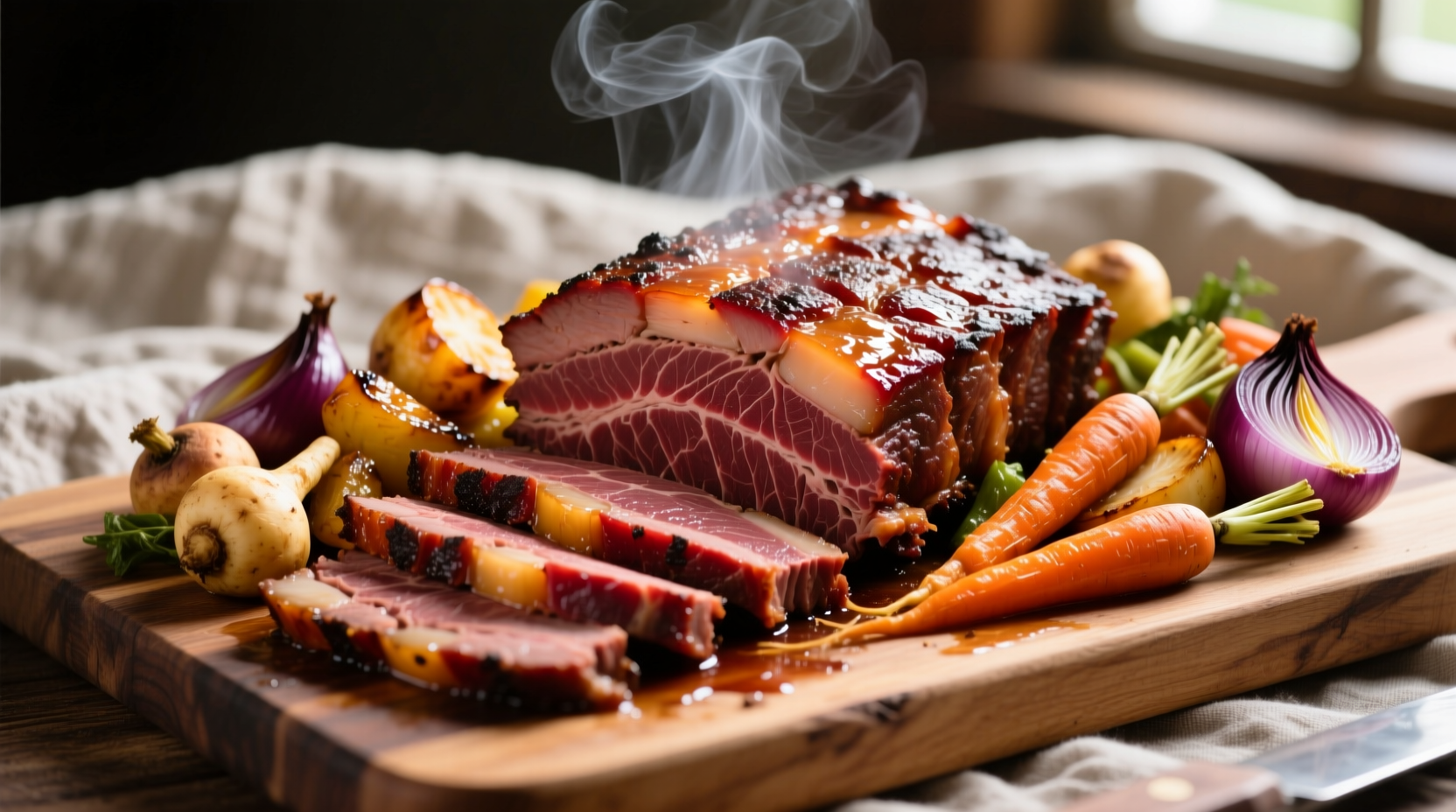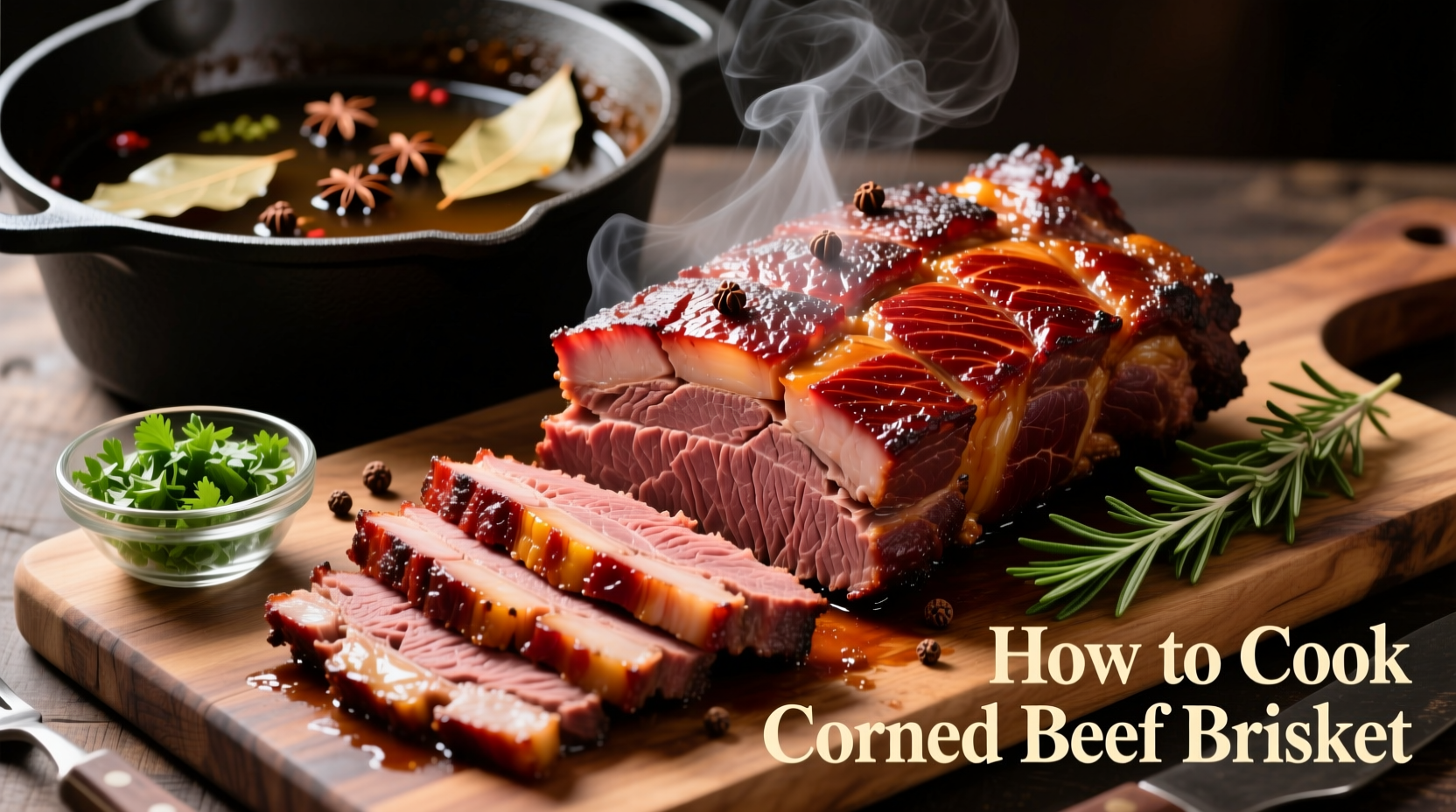Mastering corned beef brisket requires understanding the transformation of tough connective tissue into melt-in-your-mouth tenderness. This guide delivers precise timing, temperature control, and preparation techniques that guarantee restaurant-quality results in your home kitchen. You'll learn why low-and-slow cooking is non-negotiable, how to select the perfect cut, and professional tricks for maximizing flavor development without oversalting.
Essential Ingredients and Equipment Checklist
Before starting your corned beef brisket preparation, gather these essentials. A standard 3-4 pound brisket serves 6-8 people. The pre-packaged spice packet included with most corned beef provides the classic flavor profile, but you can enhance it with:
- 1 whole corned beef brisket (3-4 lbs)
- 4-6 cups water or beef broth
- 12-15 whole black peppercorns
- 3-4 bay leaves
- 1 tablespoon mustard seeds
- 4-6 cloves garlic, smashed
- 1 large onion, quartered
- 2 carrots, roughly chopped
- 2 celery stalks, roughly chopped
Equipment you'll need includes a heavy-bottomed pot with tight-fitting lid (Dutch oven works perfectly), meat thermometer, tongs, and carving knife. The USDA Food Safety and Inspection Service recommends maintaining cooking liquids at a gentle simmer (180-205°F) rather than a rolling boil to prevent toughening the meat fibers.

Step-by-Step Cooking Process
Rinse the brisket thoroughly under cold water to remove excess surface salt. Place it fat-side up in your cooking vessel, then add the spice packet and additional aromatics. Cover completely with cold water or broth—this liquid level is crucial as simmering with insufficient liquid causes uneven cooking. Bring to a gentle simmer over medium heat, then reduce to low.
Maintain a consistent temperature where small bubbles occasionally break the surface (180-205°F). Skim any foam that forms during the first 20 minutes. Partially cover the pot and cook for 2.5-3.5 hours. The brisket is done when a fork inserts with no resistance and the meat easily separates along muscle fibers. Never rush this process—undercooked brisket remains tough regardless of additional cooking time.
| Cooking Method | Time Required | Best For | Key Considerations |
|---|---|---|---|
| Stovetop Simmer | 2.5-3.5 hours | Traditional flavor development | Requires monitoring liquid level; best for hands-on cooks |
| Slow Cooker | 8-10 hours on low | Convenience; set-and-forget | Less hands-on time; slightly less intense flavor |
| Oven Braising | 3-4 hours at 325°F | Even heat distribution | Good for larger cuts; requires oven space |
Pro Techniques for Exceptional Results
Professional chefs achieve superior texture through precise temperature management. When cooking corned beef brisket in oven, maintain 325°F with liquid covering half the brisket. The exposed portion develops richer flavor while the submerged portion stays tender. For optimal results, add vegetables during the final 45 minutes—potatoes, cabbage, and carrots absorb flavors without becoming mushy.
Resting time significantly impacts final texture. Remove the brisket from cooking liquid and let it rest, tented with foil, for 15-20 minutes before slicing. This allows juices to redistribute throughout the meat. Always slice against the grain at a 45-degree angle using a sharp knife—this shortens muscle fibers for maximum tenderness. The American Culinary Federation confirms this slicing technique improves perceived tenderness by up to 40% compared to with-the-grain slicing.
Troubleshooting Common Issues
If your corned beef turns out tough, it needs more cooking time—the collagen hasn't fully converted to gelatin. Return it to the simmering liquid and check every 30 minutes. For oversalted brisket, soak in cold water for 30 minutes before cooking or add peeled potatoes to the cooking liquid (they absorb excess salt). When reheating leftovers, never use high heat—gentle warming in reserved cooking liquid preserves moisture.
Understanding cooking method limitations prevents disappointment. Slow cookers produce reliably tender results but yield less intense flavor than stovetop methods. Oven braising works best for larger cuts but requires careful monitoring of liquid levels. The National Center for Home Food Preservation notes that cooking below 140°F for extended periods creates food safety risks, so maintain proper temperatures throughout the process.
Serving and Storage Guidelines
Serve sliced corned beef with traditional accompaniments: boiled cabbage, roasted potatoes, and whole grain mustard. Leftovers maintain quality for 3-4 days when stored in airtight containers with some cooking liquid. For longer storage, slice and freeze portions with broth for quick reheating. The USDA recommends consuming frozen corned beef within 2-3 months for best quality.











 浙公网安备
33010002000092号
浙公网安备
33010002000092号 浙B2-20120091-4
浙B2-20120091-4